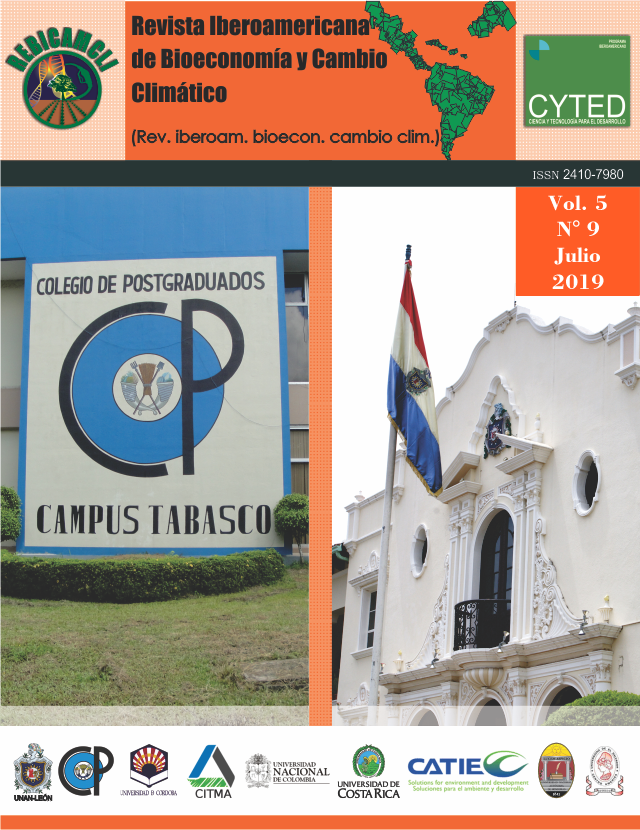Use of silicon as growth promoter of grass texas-25 King Grass for bioenergy generation
DOI:
https://doi.org/10.5377/ribcc.v5i9.7950Keywords:
Pennisetum purpureum, soil, Renewable EnergyAbstract
The application of different doses of silicon fertilization (Quick sol) was evaluated in the King Grass (Pennisetum purpureum) culture. A random complete block design was used with 5 treatments and 4 repetitions. The variables evaluated were: plant height, plant diameter, number of plants per metre, biomass, and dry matter, the application of Quick sun silicon source was carried out in four levels: T1: 0.75 L of Quick sol/ha, T2: 1.0 L of Quick sol/ha, T3: 1.25 L of Quick sol/ha, T4: 1.5 L of Quick sol/ha and T5: control. T4 with high doses of silicon showed higher performance in plant height variables (2.71m), number of plants per meter (28.89 p/m), and biomass (76.70 ton/ha), the highest percentage of humidity was recorded in the control treatment (83.15%). The trend in all response variables was kept downwards to greater application of Silicon increased production of dry matter and better behavior of dependent variables.
Downloads
Downloads
Published
How to Cite
Issue
Section
License
Copyright © 2022 Rev. iberoam. bioecon. climate change Graduate School and UNAN-León, School of Agricultural and Veterinary Sciences / Department of Agroecology / Center for Research in Bioeconomy and Climate Change (CIByCC).







